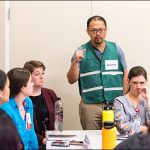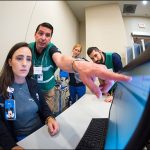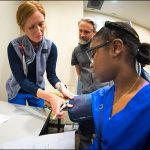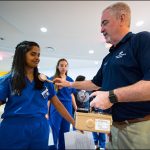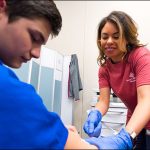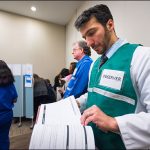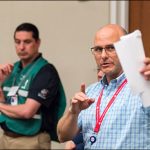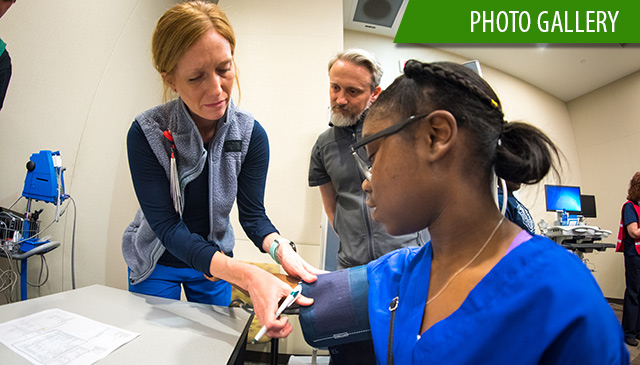
Texas Children’s Emergency Management and Bone Marrow Transplant teams recently conducted their first full-scale radiation injury treatment exercise partnering with outside agencies to simulate their roles in a radiation-related event.
As a member of the Radiation Injury Treatment Network (RITN), Texas Children’s conducts annual exercises as part of our emergency preparedness activities. RITN is a system of hospitals affiliated with the National Marrow Donor Program providing comprehensive evaluation and treatment for victims of radiation exposure. MD Anderson Cancer Center is the only other RITN member organization in the Greater Houston area.
“Over the past three years, the Emergency Management team at Texas Children’s has worked closely with the Radiation Injury Treatment Network to increase the fidelity and realism of the drills we have been conducting,” said Dr. Brent Kaziny, Medical Director of Emergency Management. “Developing plans for such hopefully never-in-our-lifetime events is one of the many responsibilities of Emergency Management. Seeing plans tested first as tabletop drills and eventually as full scale exercises allow us to pinpoint where improvements need to be made. Texas Children’s Hospital has come so far, and watching these plans become operational is extremely rewarding.”
Texas Children’s Emergency Management Manager Aaron Freedkin agreed and said if there was a radiation event nearby, Texas Children’s would get many of the affected pediatric patients.”
“That’s why it’s so important for us to practice and prepare for such an event,” Freedkin said. “Last week’s exercise gave us a great opportunity to do that.”
The seven-hour event was the first full-scale radiation injury treatment exercise the organization has participated in and tested our response following the mock detonation of an improvised nuclear device that sends patients requiring bone marrow transplant or supportive medical care to Houston by way of the National Disaster Medical System.
The exercise involved various outside local, state and federal agencies including the Southeast Texas Regional Advisory Council, Veteran’s Affairs, and American Medical Response. The exercise began at Ellington Field, a joint military and civilian airport that would host the Patient Reception Center during a large-scale disaster. Run by the Veteran’s Affairs Federal Coordinating Center, the center would receive patients from outside Houston and coordinate available local resources.
Texas Children’s Bone Marrow Team Member Dr. John Craddock said understanding who the local players are and how to work with them is a great addition to the annual exercise, which typically has been a tabletop exercise with the exception of last year when it expanded to a large scale functional exercise involved Texas Children’s Hospital West Campus and Texas Children’s Hospital The Woodlands.
“This year, the exercise was full scale, giving us a more realistic idea of what we would be dealing with,” Craddock said. “I think it was very informative.”
During the exercise, Craddock and another members of the Bone Marrow Transplant team helped receive, triage and assign for transport to area hospitals 50 mock pediatric patients and 50 adult patients. The pediatric patients at Ellington Field were played by high school students from Friendswood High School. The adult patients at Ellington Field were played by adult volunteers from various civic groups including Bay CERT, a local Community Emergency Response Team.
The second half of the exercise took place on the fourth floor of the Pavilion for Women, part of which was turned into a Patient Reception Center for the patients coming to Texas Children’s Hospital for evaluation and/or treatment. Those mock patient and their family members were played by DeBakey High School students and saw members of our pathology, chaplain, social work, patient experience and case management teams before being transferred to a patient care room if necessary.
“This is the first time we’ve simulated going from plane to hospital,” said James Mitchell director of Organizational Resilience and Emergency Management. “Going through the entire process really expanded our knowledge about how this would work.”


